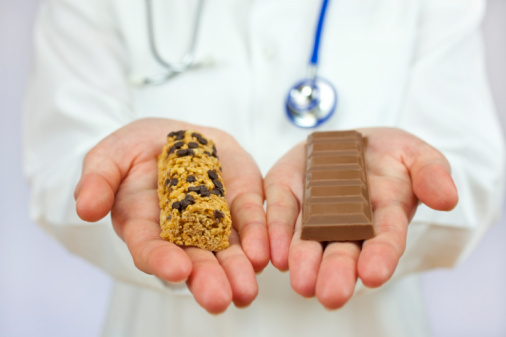 Get 10 registered dietitian/nutritionists (RDNs) in a room and the chance of us “talking shop” is virtually 100 percent. While there’d be a robust debate about some subjects, we’d all agree that the question we get more than any other from the public is, “Is this healthy?” and various iterations of the same.
Get 10 registered dietitian/nutritionists (RDNs) in a room and the chance of us “talking shop” is virtually 100 percent. While there’d be a robust debate about some subjects, we’d all agree that the question we get more than any other from the public is, “Is this healthy?” and various iterations of the same.
Many consumers have definite ideas about what’s healthy and what’s not. So do nutritionists. According to a survey recently conducted by the New York Times that contrasted responses of the public and members of the American Society of Nutritionists, a professional organization, the two groups frequently disagree about whether a food is “healthy.”
Preparation and perception
Some foods in the study were obvious. Kale is healthy; trans fat is not. Most foods fall somewhere in between. That’s because the term “healthy” doesn’t account for quantity or method of preparation, and those are often the pivotal issues. The dose makes the poison, but it also brings the benefit.
Take chicken, for example. In the study, chicken was considered healthy by nearly all RDNs and the public, but neither the method of preparation nor the quantity eaten was specified. That’s a flaw, because baked chicken eaten without the skin has less fat and fewer calories than battered and deep-fried chicken with the skin on, so it probably wouldn’t be scored the same as just “chicken.” Indeed, about half the fat in chicken resides in the skin, so just asking about “chicken” isn’t very specific.
Defining “healthy” isn’t as easy as it sounds
Nutrition science has always been dynamic. That’s what makes it endlessly fascinating to me. We know more now than we did even 10 years ago, and we’re nowhere near done learning.
Even amongst my colleagues there can be surprising disagreements. Nutritionists in the Times piece were nearly split on granola. That a food with such a “healthy” reputation is disputed by experts helps explain why the public and RDNs sometimes come to different conclusions. Granola usually has lots of great ingredients—whole-grain oats, dried fruits, nuts—but getting it to the crunchy stage takes adding sugar and usually fat, sometimes saturated fat. Also, a cup of it weighs more than a cup of a puffy cereal, but people don’t eat cereal by weight, they eat it by volume. That is, they pour the same size bowl of cereal no matter how dense it might be. An ounce of granola is about ¼ cup but an ounce of flaked cereal is about 1 full cup, so one ounce of each looks different. Granola has healthy ingredients most of the time; you just need to eat it in healthy amounts.
The Food and Drug Administration has its own ideas on the matter. After much pressure from both nutrition professionals and food manufacturers, the agency is deciding on the definition of what can be called—and labeled—a “healthy” food. When that will happen, however, is anyone’s guess.
Popular versus healthy
In the Times study, when the public rated a food healthy but nutritionists didn’t, I strongly suspect that popularity, media coverage and celebrity endorsements had something to do with it. For instance, only 37 percent of RDNs rated coconut oil as healthy (I wouldn’t have been one of them) but 71 percent of the public did. Since it’s about 90 percent saturated fat and doesn’t have consistent supporting evidence in its favor, I’ll stick with olive oil, thanks. The PREDIMED study of the Mediterranean diet has demonstrated in clinical trials the benefits of some daily olive oil. Again, though, quantity still matters, even for a healthy food.
Where would I stand on these foods?
The agreement by both groups that French fries were unhealthy mystifies me. The only reason fries would be unhealthy is if you ate too many of them too often. All they are is potatoes and oil. Baked potatoes got a great rating by nutritionists, but I’d suspect that most people eat them with some added fat, such as sour cream or butter (tip: swap the sour cream for Greek yogurt and you actually have a high-protein side dish). In either form, potatoes are actually a nutrition powerhouse, loaded with fiber, vitamins and minerals (especially potassium, but also some vitamin C). They even count as a vegetable.
Where I’d side with the public is in its rating of a SlimFast shake. (I don’t work for SlimFast and have no stake in this.) Forty-seven percent of the public rated SlimFast as healthy, versus 21 percent of nutritionists. Meal replacements aren’t perfect but can be an effective tool for reducing overall calorie intake. It’s not a dieting style for everyone, but it’s been shown to be effective in helping people lose weight, at least in the short term.
The bottom line for patients
In my daily practice at the Children’s Evaluation and Rehabilitation Center at Montefiore, I try to get my patients to make informed food choices. Many of my families are undereducated but they still want and have a right to sound nutrition information. The issue is usually how much of a given food to eat, how often and what they are doing to compensate if they overeat on occasion.
As a clinician, I’m most interested in positively influencing the health of my patients, both adults and children. To that end, I’m less interested in whether an individual food is “healthy” and much more concerned with promoting a healthy eating style.
That’s a survey I’d like to read.

